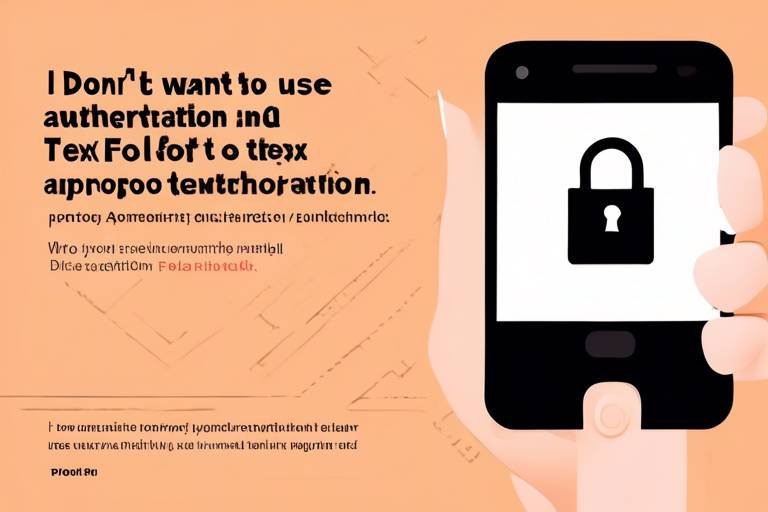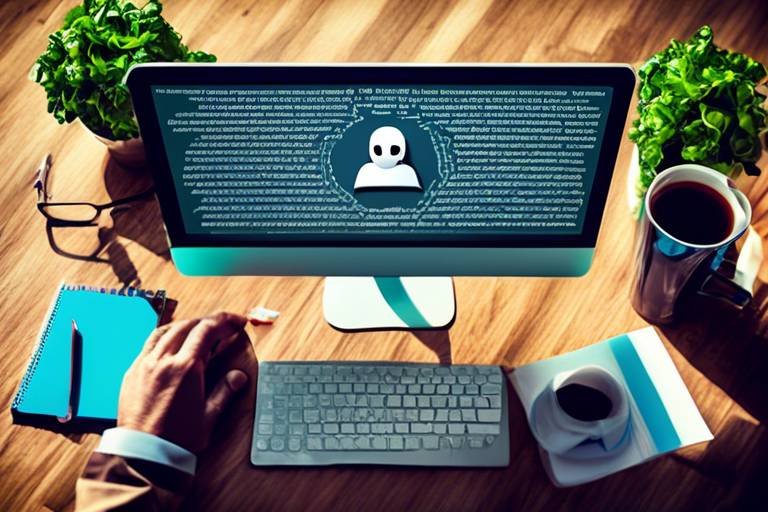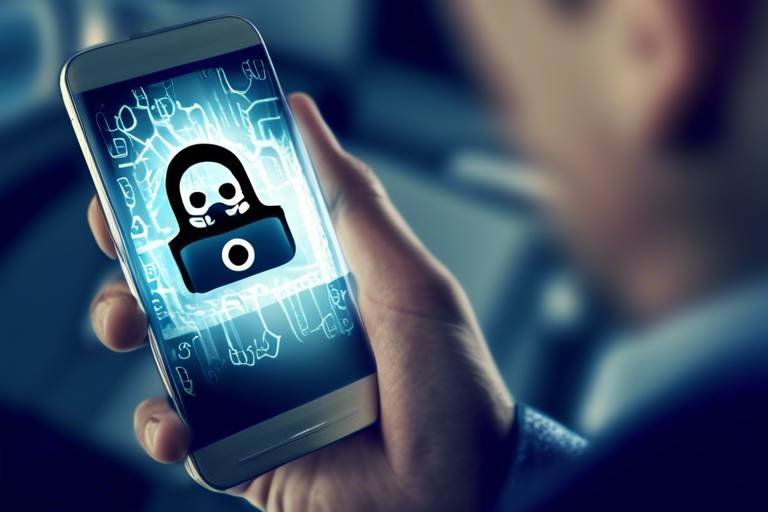The Dangers of Cyber Harassment - How to Stay Safe
In today’s digital age, where our lives are increasingly intertwined with technology, the risks of cyber harassment loom larger than ever. It's not just an abstract concept; it's a real threat that can have devastating effects on individuals, families, and communities. Imagine waking up to find that your personal information has been leaked online, or receiving threatening messages in your inbox. The feeling of vulnerability can be overwhelming. This article explores the risks associated with cyber harassment, its impact on individuals, and effective strategies for protection and recovery in the digital age.
Cyber harassment is a term that encompasses a range of harmful behaviors conducted through digital platforms. Unlike traditional harassment, which may occur face-to-face or via phone calls, cyber harassment takes place in the vast and often anonymous realm of the internet. This can include anything from sending threatening emails to posting derogatory comments on social media. The anonymity of the internet can embolden harassers, making them feel invincible as they hide behind screens. This section defines cyber harassment, its various forms, and how it differs from traditional harassment.
Identifying the signs of cyber harassment is crucial for early intervention. It can be subtle at first, perhaps starting with a few mean comments or unsolicited messages. However, it can escalate quickly. Common indicators that someone may be experiencing online harassment include:
- Changes in behavior, such as withdrawal from social activities
- Increased anxiety or fear when using digital devices
- Unexplained changes in mood or emotional state
Recognizing these signs can be the first step in helping someone seek the support they need.
There are various types of cyber harassment, including cyberbullying, doxxing, and online stalking. Each type has its unique characteristics and can affect victims in different ways.
Cyberbullying is perhaps the most recognized form of online harassment, especially among young people. This form of harassment can take many shapes, from spreading rumors to sharing embarrassing photos without consent. The effects on mental health can be profound, leading to anxiety, depression, and even suicidal thoughts. Prevention strategies include fostering open communication about online experiences and educating young users about responsible internet behavior.
Doxxing, or the act of publicly revealing personal information about someone online, poses significant risks. Imagine someone posting your home address, phone number, or workplace on a public forum. This not only invades privacy but can also lead to physical threats. Protecting personal data is crucial; users should regularly update privacy settings on social media and be cautious about the information they share online.
The emotional and psychological impacts of cyber harassment can be severe. Victims may experience feelings of isolation, helplessness, and despair. The constant fear of being targeted can lead to significant mental health issues, including anxiety disorders and depression. It's essential for victims to understand that they are not alone and that seeking help is a sign of strength. Professional support, whether through therapy or support groups, can be invaluable in the recovery process.
Understanding legal protections against cyber harassment is essential for victims. Many countries have enacted laws designed to protect individuals from online harassment. Familiarizing yourself with these laws can empower victims to take action. Resources are also available for reporting incidents, including local law enforcement and online platforms that offer reporting mechanisms.
Knowing how to report cyber harassment is vital for victims. The reporting process can often feel daunting, but breaking it down into manageable steps can help. Here’s a simple guide:
- Document the harassment by taking screenshots or saving messages.
- Report the incident to the platform where it occurred.
- Contact local authorities if the harassment escalates or threatens safety.
Taking these steps can help put a stop to the harassment and begin the healing process.
Support systems play a crucial role in recovery from cyber harassment. Friends and family can provide emotional support, while professional resources can offer guidance and coping strategies. Engaging with support groups, whether in-person or online, can also help victims feel less isolated. Remember, it's okay to ask for help, and reaching out can be the first step toward reclaiming your sense of safety and well-being.
What should I do if I am being cyber harassed?
If you are experiencing cyber harassment, document everything, report the behavior to the platform, and reach out to trusted friends or professionals for support.
Are there laws against cyber harassment?
Yes, many jurisdictions have laws that address cyber harassment. It's important to familiarize yourself with the laws in your area to understand your rights.
How can I protect my personal information online?
To protect your personal information, regularly update privacy settings, be cautious about what you share, and consider using pseudonyms or limiting your online presence.
Where can I find support if I am a victim of cyber harassment?
Support can be found through friends, family, mental health professionals, and online support groups specifically tailored for victims of harassment.

Understanding Cyber Harassment
This article explores the risks associated with cyber harassment, its impact on individuals, and effective strategies for protection and recovery in the digital age.
Cyber harassment is a term that encapsulates a range of harmful behaviors conducted through digital platforms. In today’s hyper-connected world, where social media and online communication are integral to our daily lives, understanding the nuances of cyber harassment is more important than ever. But what exactly does it entail? At its core, cyber harassment involves the use of technology to harass, threaten, or intimidate an individual. This can manifest in various forms, from sending abusive messages to posting damaging information online.
Unlike traditional harassment, which often occurs face-to-face or through physical means, cyber harassment can be relentless and pervasive. Imagine being followed around by a shadow that never leaves your side—that's what cyber harassment can feel like. It can invade your personal space, disrupt your peace of mind, and make you feel unsafe in your own digital world. The anonymity provided by the internet can embolden perpetrators, making it easier for them to engage in harmful behaviors without facing immediate consequences.
There are several forms of cyber harassment that individuals may encounter, including:
- Cyberbullying: Often directed towards young people, this involves repeated aggressive behavior using digital platforms.
- Doxxing: This is the act of publicly revealing private information about someone without their consent.
- Online Stalking: This involves persistent and unwanted attention through digital means, often leading to fear and anxiety for the victim.
Understanding these forms is crucial because they each come with their unique characteristics and consequences. Cyberbullying, for instance, can have devastating effects on a young person’s mental health, leading to feelings of isolation and depression. Doxxing, on the other hand, can expose individuals to real-world threats, as their personal information is laid bare for anyone to see. Online stalking is particularly insidious, as it can make victims feel as though they are constantly being watched, leading to severe emotional distress.
In summary, cyber harassment is not just a buzzword; it is a serious issue that affects countless individuals every day. By recognizing its various forms and understanding the emotional and psychological toll it can take, we empower ourselves and others to take action against it. The digital age offers incredible opportunities for connection, but it also brings with it new challenges that we must navigate with care and awareness.
What is cyber harassment?
Cyber harassment is the use of digital platforms to harass, threaten, or intimidate someone. It can include behaviors like sending abusive messages, spreading rumors, or revealing personal information without consent.
How can I recognize if someone is being cyber harassed?
Common signs include sudden changes in behavior, withdrawal from social activities, and visible distress when using digital devices. If someone seems anxious or fearful about their online presence, it may indicate they are experiencing harassment.
What should I do if I am a victim of cyber harassment?
Document everything, report the harassment to the relevant platforms, and seek support from trusted friends or professionals. It's important to know that you are not alone and help is available.
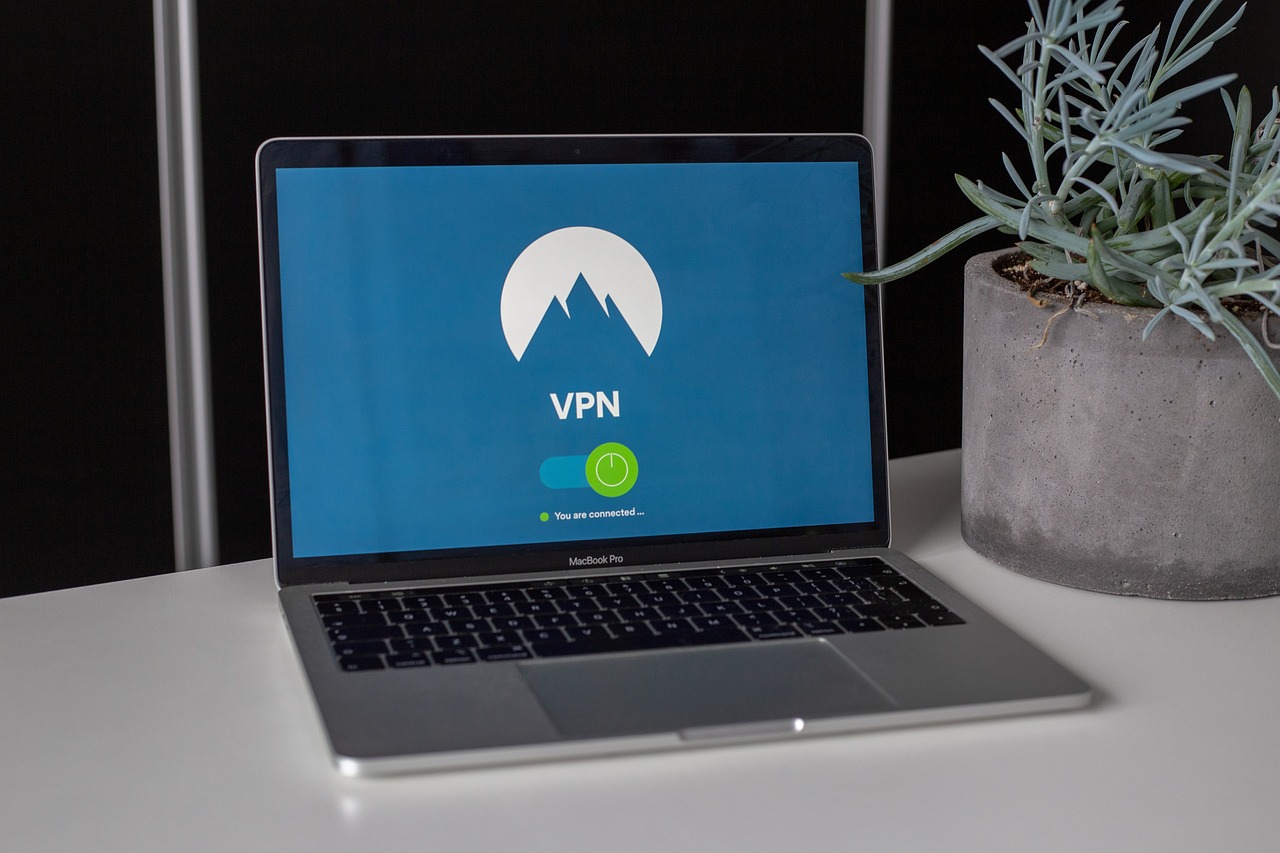
Recognizing the Signs
Identifying the signs of cyber harassment is crucial for early intervention and protection. In a world where our lives are increasingly intertwined with digital platforms, it’s essential to understand what constitutes online harassment and how it manifests. Often, the signs can be subtle, but they accumulate over time, creating a toxic environment for the victim. So, how can you tell if someone is experiencing cyber harassment? Here are some common indicators to watch for:
- Changes in Behavior: If you notice someone becoming unusually withdrawn or anxious, it could be a sign that they are facing online harassment. This shift in demeanor can often be linked to the stress that comes from being targeted.
- Frequent Absences: A victim might start avoiding social media or digital communication altogether. If someone who used to be active online suddenly goes quiet, it’s worth checking in on them.
- Emotional Distress: Look for signs of emotional turmoil, such as increased irritability, sadness, or frustration. These feelings can stem from constant online attacks or negative comments.
- Physical Symptoms: Cyber harassment can manifest physically too. Complaints of headaches, stomach issues, or other stress-related ailments may signal underlying emotional distress.
Recognizing these signs early can be the key to providing support and intervention. It’s important to approach the situation with empathy and understanding. If you suspect that someone is being harassed online, gently encourage them to talk about their experiences. Sometimes, just having someone to listen can make a world of difference.
Additionally, it’s essential to educate oneself about the various types of cyber harassment, as recognizing the specific behaviors can help in understanding the severity of the situation. For instance, someone might experience cyberbullying, which often involves repeated aggressive messages or social exclusion. Alternatively, they might be a victim of doxxing, where personal information is maliciously shared online. Each type comes with its own set of signs and implications, and being aware of these can empower both victims and their support systems.
In conclusion, recognizing the signs of cyber harassment is not just about being observant; it’s about being proactive. The sooner one identifies these signs, the quicker they can take steps to protect themselves or someone they care about. Empowerment through awareness is a powerful tool in combating the negative effects of cyber harassment.

Types of Cyber Harassment
Cyber harassment is a broad term that encompasses a variety of harmful behaviors carried out through digital platforms. Understanding the different types of cyber harassment is essential for recognizing and addressing these issues effectively. Each type has its own unique characteristics and can have varying impacts on victims. Here are some of the most common forms:
Cyberbullying is perhaps the most well-known type of cyber harassment, particularly among young people. It involves repeated aggressive behavior carried out through social media, messaging apps, or online forums. Victims often experience a range of emotional responses, including anxiety, depression, and low self-esteem. It’s crucial to recognize that the effects of cyberbullying can be long-lasting, sometimes leading to severe mental health issues. To combat cyberbullying, it’s important for parents, educators, and peers to foster open communication and provide support to those affected.
Doxxing is another alarming form of cyber harassment where an individual’s personal information is publicly disclosed without their consent. This can include addresses, phone numbers, and even workplace details. The risks associated with doxxing are significant, as it can lead to real-world harassment, stalking, or even physical harm. Protecting personal data is vital in today’s digital landscape, and individuals should be aware of the information they share online. Simple steps like adjusting privacy settings on social media can make a big difference.
Online stalking is a more insidious form of cyber harassment that involves persistent and unwanted attention from an individual. This can manifest through excessive messaging, following someone on various platforms, or gathering information about the victim without their knowledge. Victims of online stalking often feel a sense of violation and fear, as their personal space is invaded in a way that can feel inescapable. It’s crucial for individuals to recognize the signs of online stalking early on and to take steps to protect themselves, such as blocking the perpetrator and documenting any evidence of harassment.
In addition to these primary forms, there are other types of cyber harassment that can also have detrimental effects, including:
- Flaming: Posting inflammatory comments to provoke others.
- Impersonation: Creating fake accounts to deceive or defame someone.
- Revenge porn: Sharing intimate images without consent to harm the victim's reputation.
Understanding these various types of cyber harassment is the first step toward prevention and recovery. By being aware of the different manifestations of online harassment, individuals can better protect themselves and support others who may be facing these challenges. The digital world can be a dangerous place, but knowledge is power, and together, we can foster a safer online environment.
What should I do if I experience cyber harassment?
If you find yourself a victim of cyber harassment, it’s important to document everything. Take screenshots, save messages, and report the behavior to the platform where it occurred. Don’t hesitate to reach out to friends or family for support, and consider reporting the incident to authorities if necessary.
Can cyber harassment happen to anyone?
Yes, cyber harassment can happen to anyone, regardless of age, gender, or background. However, certain groups, such as teenagers and marginalized communities, may be more vulnerable to targeted harassment.
How can I protect myself from cyber harassment?
To protect yourself, be mindful of the information you share online. Use privacy settings on social media, be cautious about accepting friend requests from strangers, and consider using strong, unique passwords for your accounts.
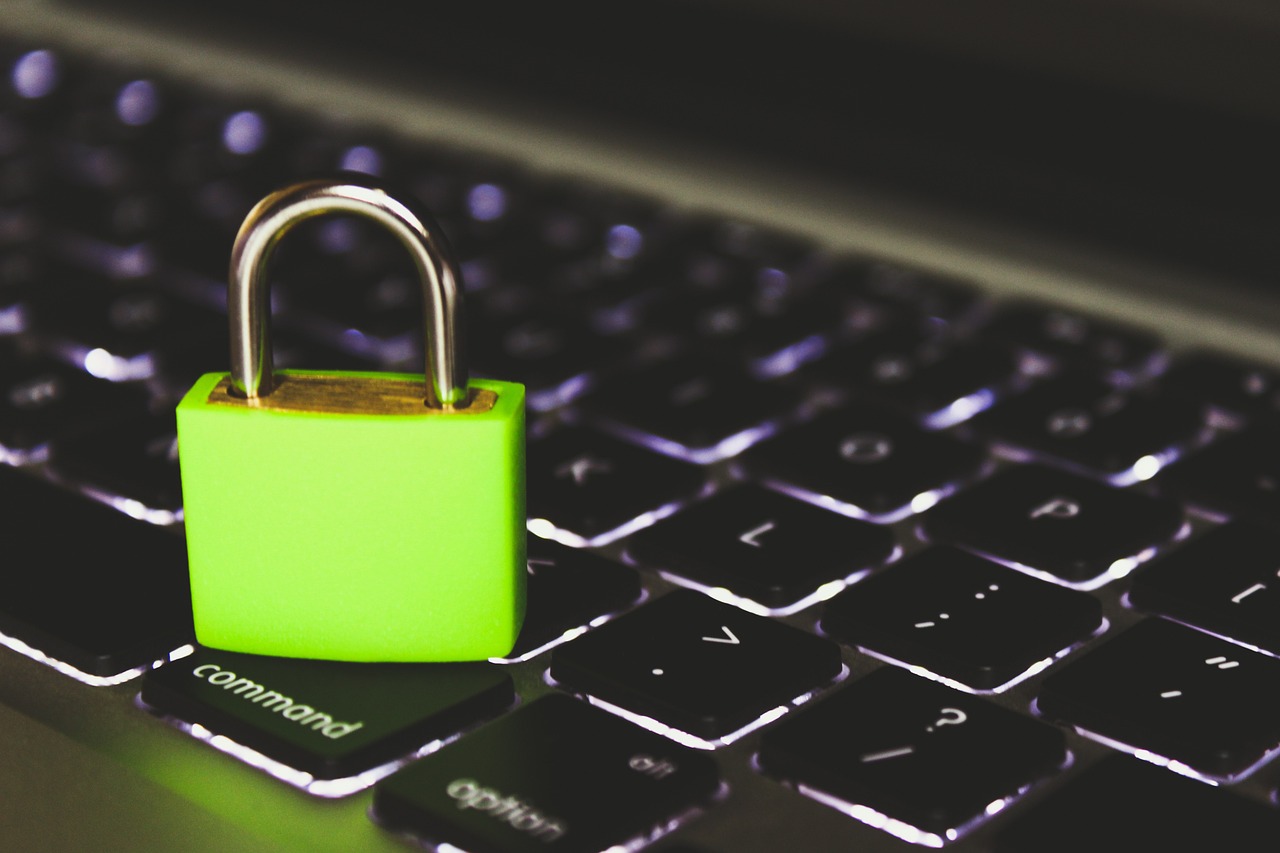
Cyberbullying
Cyberbullying is a significant issue that has gained attention in recent years, especially among young people. Unlike traditional bullying, which often occurs in person, cyberbullying takes place through digital platforms such as social media, messaging apps, and online forums. This form of harassment can be particularly insidious because it can happen at any time and often anonymously, leaving victims feeling trapped and vulnerable.
The impact of cyberbullying on mental health is profound. Victims may experience a range of emotional responses, including anxiety, depression, and feelings of isolation. Imagine being in a crowded room yet feeling utterly alone; that’s the reality for many who face relentless online attacks. The fear of being ridiculed or targeted can lead to a withdrawal from social interactions, both online and offline. This isolation can exacerbate feelings of worthlessness and despair, making it crucial to address the issue head-on.
So, how can we prevent cyberbullying? Here are some effective strategies:
- Education: Teaching young people about the consequences of their online actions and the importance of empathy can create a more respectful digital environment.
- Open Communication: Encouraging open dialogue between parents, teachers, and students helps to foster a supportive atmosphere where victims feel safe to share their experiences.
- Monitoring Online Activity: While respecting privacy is important, keeping an eye on online interactions can help identify troubling patterns early on.
Moreover, it’s essential to create a culture of accountability. Just as we would not tolerate bullying in a schoolyard, we must not accept it in the digital world. Schools and organizations should implement clear policies against cyberbullying, ensuring that there are consequences for those who engage in such harmful behaviors. This not only protects victims but also serves as a deterrent for potential bullies.
In conclusion, cyberbullying is more than just an unpleasant experience; it can have lasting effects on a person's mental health and overall well-being. By raising awareness, promoting open communication, and fostering a culture of respect, we can work together to combat this pervasive issue. Remember, every action counts, and by standing against cyberbullying, we are creating a safer and more inclusive digital space for everyone.
- What is the difference between cyberbullying and traditional bullying? Cyberbullying occurs online and can be anonymous, while traditional bullying happens face-to-face.
- How can I recognize if someone is being cyberbullied? Signs include withdrawal from social activities, changes in mood, and sudden reluctance to use digital devices.
- What should I do if I witness cyberbullying? Report the behavior to the appropriate authorities, whether it's a school official or the platform where the bullying is occurring.

Doxxing
Doxxing, a term derived from "dropping documents," refers to the malicious act of publicly revealing someone’s personal information without their consent. This can include sensitive data such as home addresses, phone numbers, email addresses, and even workplace details. The rise of the internet and social media has unfortunately made doxxing more prevalent, transforming it into a weapon for harassment and intimidation. Imagine waking up one day to find your private life laid bare for all to see—it's not just an invasion of privacy; it's a profound violation that can lead to real-world consequences.
The risks associated with doxxing are extensive. Victims may face harassment, stalking, or even threats to their safety. The emotional toll can be overwhelming, as individuals grapple with anxiety, fear, and a sense of helplessness. It’s crucial to understand that doxxing is not just an online issue; it can spill over into the physical world, affecting relationships, careers, and overall well-being. In this digital age, where online interactions are commonplace, one must be vigilant about the information they share.
To illustrate the severity of doxxing, consider the following table that outlines potential impacts on victims:
| Impact | Description |
|---|---|
| Emotional Distress | Victims may experience anxiety, depression, and feelings of vulnerability. |
| Physical Safety Risks | Publicly available information can lead to stalking or threats. |
| Professional Consequences | Employment opportunities may be jeopardized due to reputation damage. |
| Legal Issues | Victims may need to navigate complex legal situations to protect themselves. |
So, how can individuals protect themselves against doxxing? Here are some proactive measures:
- Limit Personal Information: Be cautious about what you share on social media and public forums. Review your privacy settings regularly.
- Use Strong Passwords: Ensure that your online accounts are secured with strong, unique passwords to prevent unauthorized access.
- Monitor Your Digital Footprint: Regularly search for your name online to see what information is publicly available and take steps to remove anything harmful.
- Educate Yourself: Stay informed about the tactics used by doxxers and understand how to react if you become a target.
In conclusion, doxxing is a serious threat that can lead to devastating consequences for its victims. By being aware of the risks and taking preventative steps, individuals can help protect themselves and their loved ones from this invasive behavior. Remember, in a world where information is just a click away, safeguarding your personal data is more important than ever.
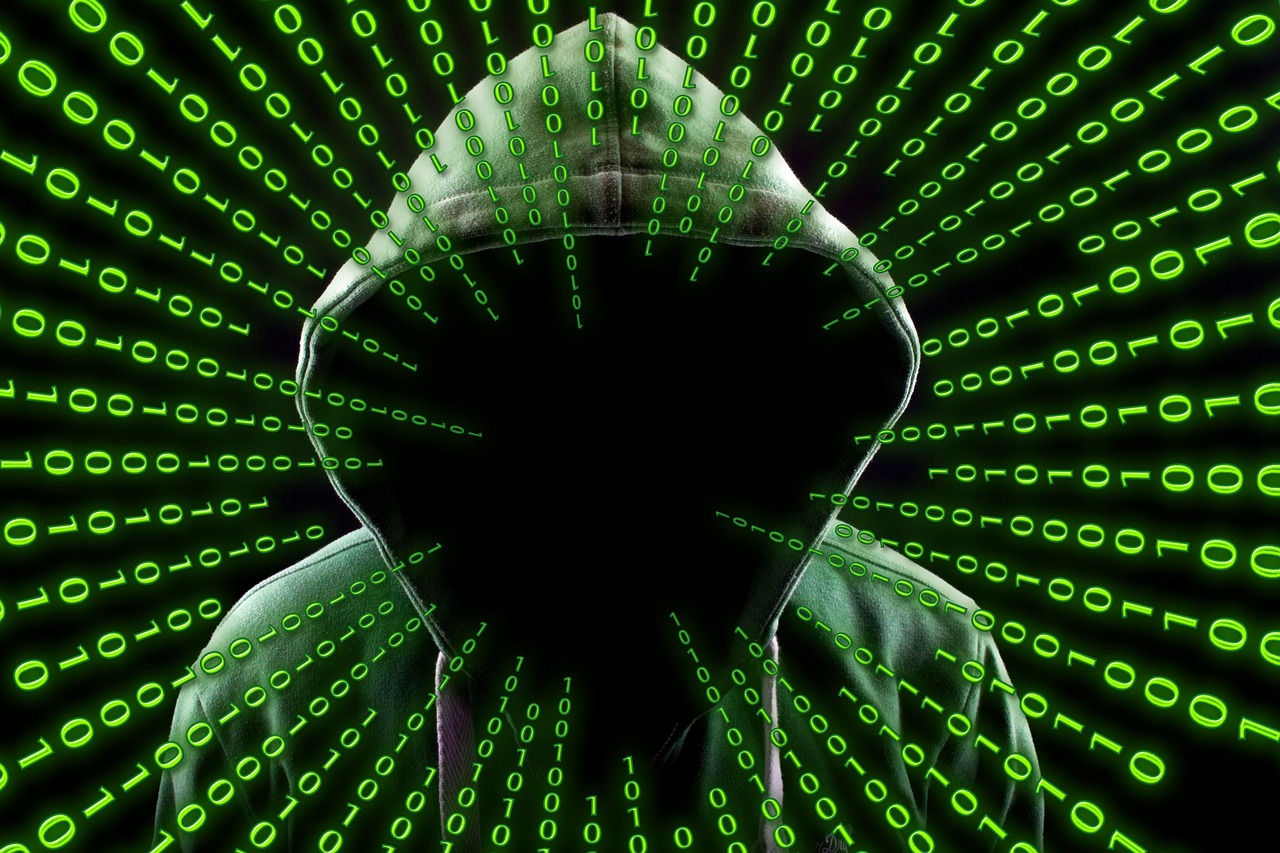
Emotional and Psychological Impact
Cyber harassment is not just a digital nuisance; it can have profound and lasting effects on the emotional and psychological well-being of its victims. Imagine waking up every day, wondering if today will be the day you encounter another wave of online abuse. The constant fear and anxiety can lead to a state of hyper-vigilance, making it difficult for individuals to focus on their daily tasks. Victims often report feeling isolated, as if they are trapped in a digital prison where every interaction is scrutinized and potentially harmful.
The emotional toll can manifest in various ways, including increased levels of stress, depression, and anxiety. Many victims experience a significant decline in self-esteem, feeling worthless or unworthy due to the negative comments and harassment they endure. This can lead to a vicious cycle where the more they are attacked, the more they internalize the hate, further exacerbating their mental health struggles. It's crucial to recognize these signs and understand that they are valid reactions to an invalid situation.
Furthermore, the anonymity provided by the internet can amplify the impact of cyber harassment. Unlike traditional forms of harassment, where the perpetrator might be known, online harassers often hide behind screens, making their attacks feel even more personal and targeted. This anonymity can lead to a sense of helplessness, as victims may feel they have no control over the situation or the ability to confront their harassers. The psychological effects can be so severe that some individuals may even develop symptoms akin to post-traumatic stress disorder (PTSD), including flashbacks and severe anxiety in social situations.
It's essential for victims to seek help and support. Talking to friends and family about their experiences can provide a sense of relief and validation. Additionally, professional help from therapists or counselors who specialize in trauma can be invaluable. They can offer coping strategies and tools to manage the emotional fallout of cyber harassment. Support groups, both online and offline, can also provide a safe space for victims to share their experiences and connect with others who understand what they are going through.
In summary, the emotional and psychological impact of cyber harassment is significant and should not be underestimated. It can affect every aspect of a victim's life, from their mental health to their relationships and overall quality of life. Recognizing the signs and seeking support is vital for recovery. Remember, no one should have to endure harassment in silence, and there are resources available to help navigate the stormy seas of cyber harassment.
- What should I do if I am being cyber harassed? - It's important to document the harassment, report it to the platform, and seek support from friends, family, or professionals.
- Can cyber harassment affect my mental health? - Yes, it can lead to anxiety, depression, and a decline in self-esteem.
- Are there legal protections against cyber harassment? - Yes, many jurisdictions have laws in place to protect individuals from online harassment.
- How can I protect myself from cyber harassment? - Use privacy settings, be cautious about sharing personal information, and consider using online support networks.
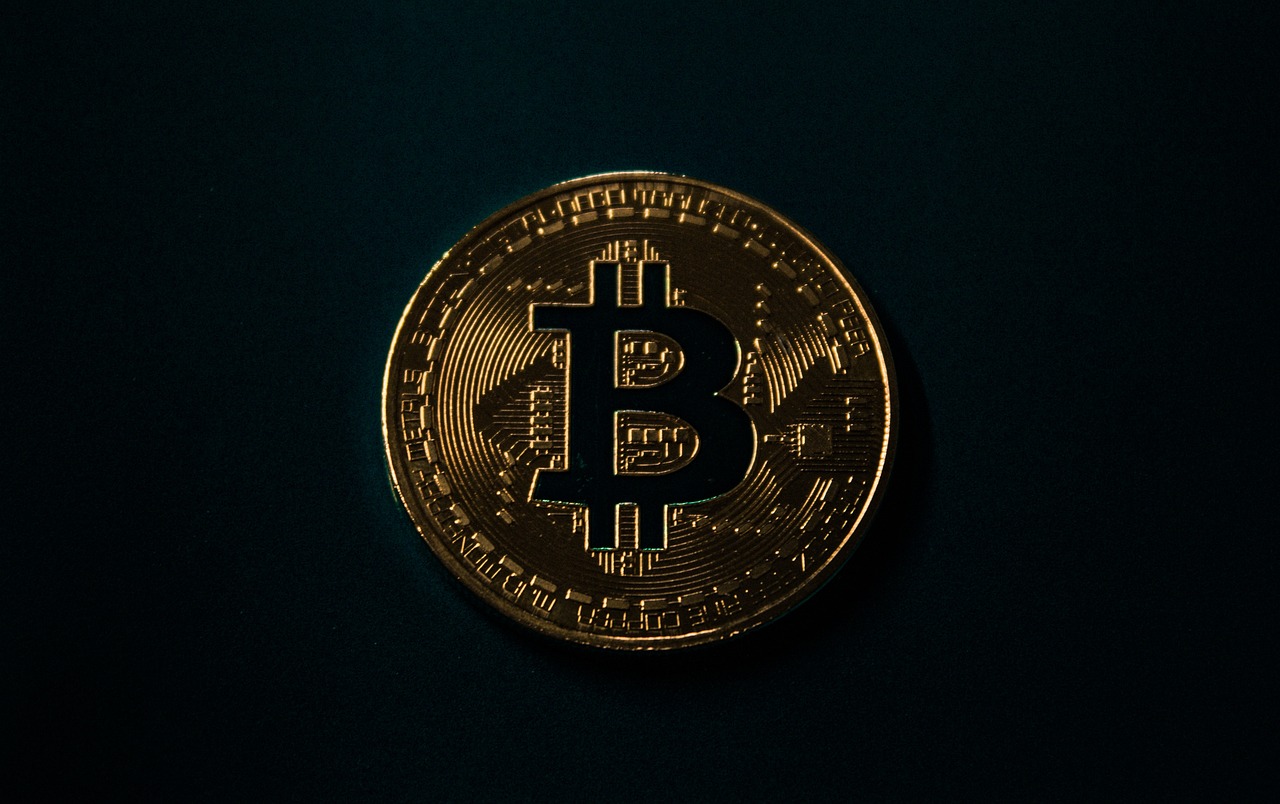
Legal Protections and Resources
In our increasingly digital world, understanding the legal protections available against cyber harassment is crucial for anyone who may find themselves a victim. Cyber harassment is not just a personal issue; it can have serious legal implications. Many jurisdictions have enacted laws specifically designed to combat online harassment, providing victims with avenues for recourse. These laws vary significantly from one region to another, so it’s important to familiarize yourself with the regulations that apply in your area.
For instance, many countries have laws that address cyberbullying, stalking, and the unauthorized distribution of personal information. In the United States, various federal and state laws protect individuals from harassment, including the Communications Decency Act and anti-stalking statutes. These laws can be used to hold perpetrators accountable and provide a legal framework for victims seeking justice.
Additionally, many online platforms have their own policies and reporting mechanisms in place to deal with cyber harassment. Reporting incidents to these platforms can lead to the removal of harmful content and even the suspension of the harasser’s account. It’s essential to document all interactions and gather evidence, such as screenshots and timestamps, to support your case. This evidence can be invaluable when reporting to authorities or seeking legal action.
Here are some resources that can be helpful for victims of cyber harassment:
- National Domestic Violence Hotline: Provides resources and support for victims of all forms of harassment.
- Cyber Civil Rights Initiative: Offers assistance and resources for victims of doxxing and non-consensual pornography.
- Local Law Enforcement: Always a good first step to report harassment incidents.
- Legal Aid Societies: Can provide legal advice and assistance for those who cannot afford a lawyer.
Understanding your rights and the resources available can empower you to take action against cyber harassment. Remember, you are not alone, and there are people and organizations ready to support you through this challenging time.
Q: What should I do if I am being harassed online?
A: First, document all incidents of harassment, including screenshots and messages. Then, report the harassment to the platform where it’s occurring and consider contacting local law enforcement for further assistance.
Q: Are there laws against cyber harassment?
A: Yes, many jurisdictions have specific laws addressing cyber harassment, including anti-bullying laws and stalking statutes. It’s important to research the laws applicable in your area.
Q: Can I get help from a lawyer?
A: Yes, seeking legal advice can be beneficial, especially if you're considering taking legal action against the harasser. Many legal aid organizations can provide assistance at little to no cost.
Q: What are some ways to protect my personal information online?
A: Use strong passwords, adjust privacy settings on social media, and be cautious about sharing personal details online. Consider using privacy tools that can help safeguard your information.

Reporting Cyber Harassment
When faced with cyber harassment, it can feel like you're trapped in a digital maze with no clear exit. The first step towards reclaiming your peace of mind is knowing how to report the harassment effectively. It's essential to document everything. Take screenshots of messages, save emails, and keep records of any relevant interactions. This evidence will be crucial when you approach authorities or online platforms.
Next, you should report the incident to the platform where the harassment is occurring. Most social media sites and online forums have specific reporting tools in place for such situations. For example, Facebook, Twitter, and Instagram provide options to report abusive content directly. When submitting a report, include all the evidence you've gathered and be as detailed as possible about the harassment. This not only helps the platform understand the severity of the issue but also increases the likelihood of a swift response.
After reporting to the platform, consider reaching out to local law enforcement, especially if the harassment escalates or if you feel threatened. Many jurisdictions have laws against cyber harassment, and police can provide guidance on how to proceed. Be prepared to share your documentation with them as well. In some cases, law enforcement may be able to take immediate action to protect you.
Additionally, you can seek help from organizations dedicated to supporting victims of online harassment. These groups often provide resources, legal advice, and emotional support. They can guide you through the reporting process and help you understand your rights. Some notable organizations include:
- The Cyber Civil Rights Initiative
- StopBullying.gov
- The National Network to End Domestic Violence
Finally, remember that you are not alone in this fight. Many individuals have faced similar challenges and have successfully navigated the reporting process. Don’t hesitate to lean on your support network of friends and family during this time. Sharing your experience can provide emotional relief and practical advice on how to handle the situation.
In summary, reporting cyber harassment is a multi-step process that requires careful documentation, timely reporting to relevant platforms, and possibly involving law enforcement. By taking these steps, you not only protect yourself but also contribute to a safer online environment for everyone.
Q: What should I do if the harassment continues after reporting it?
A: If the harassment persists, keep documenting all incidents and consider escalating the issue to law enforcement. You may also want to adjust your privacy settings on social media or consider temporarily disabling your accounts.
Q: Can I report harassment anonymously?
A: Most platforms allow you to report harassment anonymously, but providing your contact information can help them reach you for further details if needed.
Q: What if I don’t feel safe reporting to the police?
A: If you feel unsafe, seek assistance from trusted friends or family members. You can also contact organizations that specialize in supporting victims of cyber harassment for guidance on how to proceed without directly involving law enforcement.

Support Systems
When navigating the tumultuous waters of cyber harassment, having a strong support system can make all the difference between feeling isolated and regaining control over your life. Imagine you’re on a small boat in a stormy sea; without a lifeboat or a life jacket, you might feel like you’re going under. But with the right support, you can weather the storm and emerge stronger. It's crucial to reach out to those who can provide emotional and practical help.
Support systems can come in many forms. Friends and family are often the first line of defense. They can offer a listening ear, a shoulder to cry on, or even help you document incidents of harassment. However, it’s essential to choose those who are understanding and non-judgmental. Sometimes, talking to someone who has experienced similar situations can be incredibly comforting. Support groups, both online and offline, can provide a sense of community and shared understanding.
Additionally, professional help should not be overlooked. Therapists and counselors trained in dealing with trauma and harassment can provide strategies to cope with the emotional fallout. They can help victims process their feelings and develop a robust plan for recovery. Many organizations also offer helplines and resources specifically aimed at supporting victims of cyber harassment, providing both emotional support and practical advice.
Here are some types of support systems that can be beneficial:
- Friends and Family: Trusted loved ones can offer emotional support and help you feel less alone.
- Support Groups: Connecting with others who have gone through similar experiences can provide comfort and understanding.
- Professional Help: Therapists and counselors can offer coping strategies and a safe space to discuss feelings.
- Online Resources: Many organizations provide online forums, chat services, and helplines specifically for victims of cyber harassment.
In addition to emotional support, it’s vital to have a practical plan in place. This includes documenting every instance of harassment, saving screenshots, and keeping records of any communications. This documentation can be invaluable if you decide to report the harassment to authorities or seek legal action. Remember, you are not alone in this fight, and there are people and resources available to help you reclaim your peace of mind.
Q: What should I do if I experience cyber harassment?
A: First, document everything. Take screenshots and save messages. Then, reach out to trusted friends or family for support, and consider contacting a professional for help. You can also report the harassment to the platform where it occurred.
Q: Are there legal protections against cyber harassment?
A: Yes, many jurisdictions have laws against harassment, including cyber harassment. It's essential to understand your local laws and seek legal advice if necessary.
Q: How can I protect myself from future harassment?
A: Adjust your privacy settings on social media, be cautious about sharing personal information, and consider using security features like two-factor authentication. Educating yourself about online safety can also empower you to navigate the digital world more securely.
Frequently Asked Questions
- What is cyber harassment?
Cyber harassment refers to harmful behaviors conducted through digital platforms, such as social media, emails, or messaging apps. It can take many forms, including threats, insults, or spreading false information about someone.
- How can I recognize if someone is experiencing cyber harassment?
Look for signs such as sudden changes in behavior, withdrawal from social interactions, or expressing feelings of anxiety or fear when using digital devices. If someone seems overly upset or is frequently checking their online accounts for negative messages, they might be experiencing harassment.
- What are the different types of cyber harassment?
Cyber harassment can manifest in various forms, including:
- Cyberbullying: Often seen among young people, it involves repeated aggressive behavior online.
- Doxxing: The act of publicly revealing personal information about someone without their consent.
- Online stalking: Persistent and unwanted attention through digital means, often causing fear in the victim.
- What are the emotional effects of cyber harassment?
Victims of cyber harassment may experience severe emotional distress, including anxiety, depression, and feelings of isolation. The psychological impact can be profound, making it essential for victims to seek help and support.
- Are there legal protections against cyber harassment?
Yes, many countries have laws that protect individuals from cyber harassment. These laws vary by location but often include provisions for reporting harassment and seeking legal action against perpetrators.
- How can I report cyber harassment?
To report cyber harassment, you should document the incidents, including screenshots and messages. Then, you can report it to the platform where it occurred and, if necessary, to local authorities. Many platforms have specific reporting features to help you through the process.
- What support systems are available for victims?
Support systems can include friends, family, and professional resources like therapists or counselors. Online support groups can also provide a sense of community and understanding for those affected by cyber harassment.




